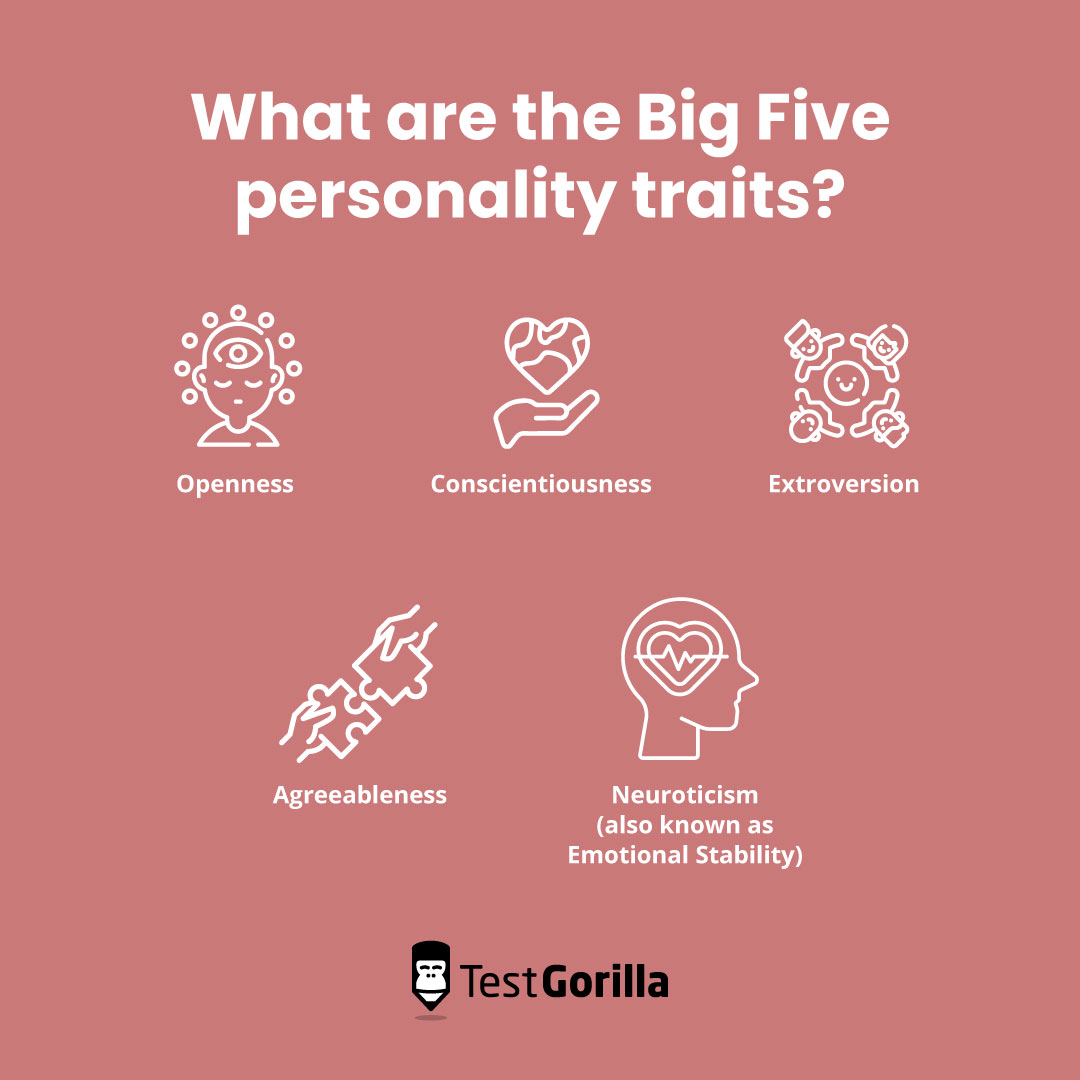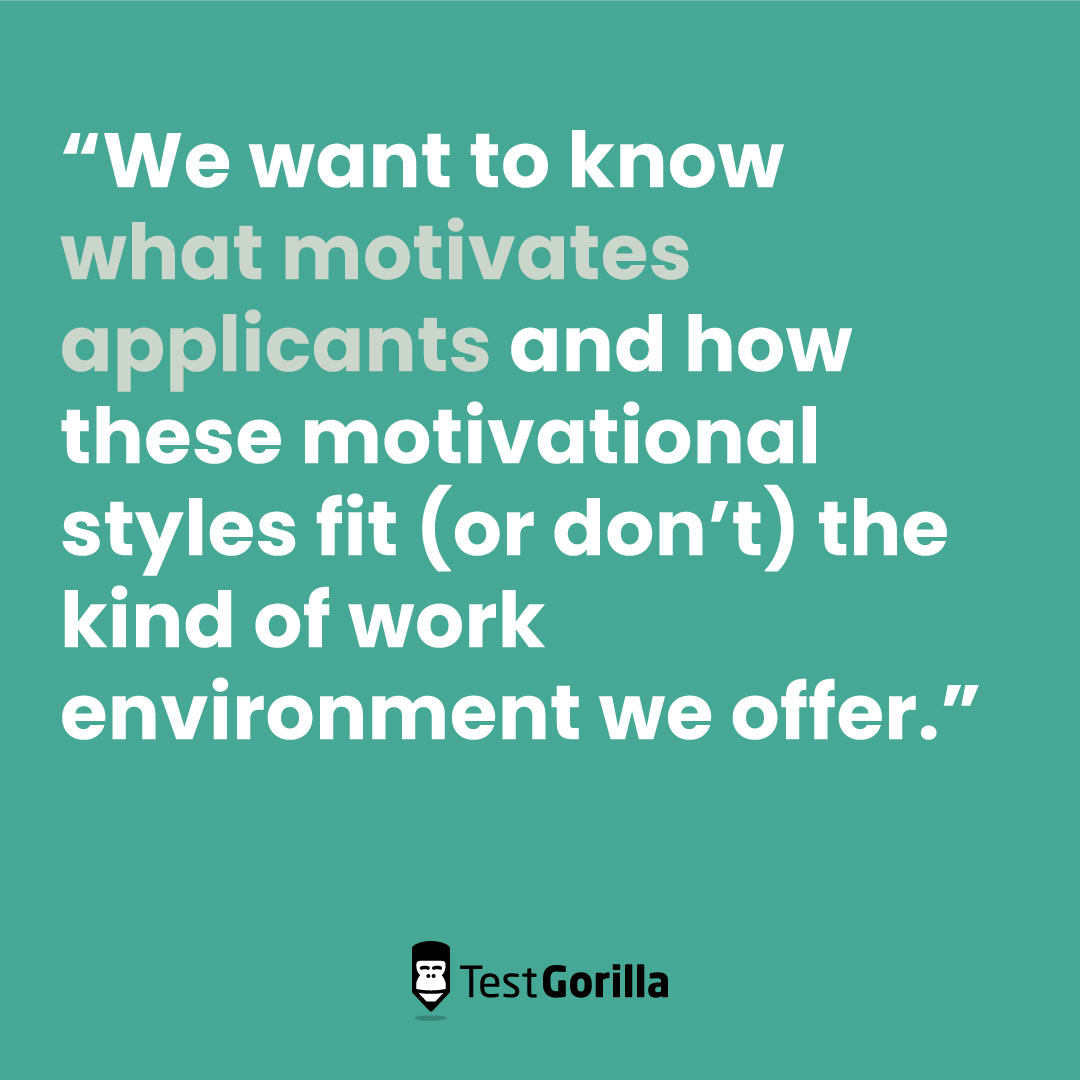The role of personality, attitude, and motivation in skills-based hiring
When it comes to recruiting, most hiring managers take one of two approaches:
Hire the person with the best skills, experience, and education (if relevant) for the position
Hire the person with the best attitude, drive, and personality for the company
There are merits to either approach, and you can build a highly successful company by prioritizing one or the other.
But which is the best approach? And are the two really at odds with one another? Or can we build a hiring process that looks at both aspects of each applicant to gain a holistic view of what they can bring to the table?
In this guide, we explore the role of personality, attitude, and motivation in recruitment and how they interact with a skills-based hiring approach built around skills assessments.
“Hire for attitude; train for skill.” Is this really good advice?
You hear this one a lot in hiring circles:
“Hire for attitude; train for skill.”
It’s a good surface-level premise. The relevant skills for a job can be taught, but a person’s values and attitude toward work are ingrained.
Unfortunately, it falls apart from there.
Besides the obvious exceptions to the rule (you’re probably not going to hire a heart surgeon who doesn’t have the relevant skills), the idea of “attitude” quickly descends into subjective, unmeasurable niceties like this one from Southwest Airlines:[1]
“The first thing we look for is the ‘warrior spirit’…So much of our history was born out of battles – fighting for the right to be an airline, fighting off the big guys who wanted to squash us, now fighting off the low-cost airlines trying to emulate us. We are battle-born, battle-tried people. Anyone we add has to have some of that warrior spirit.”
What does that mean, “warrior spirit”?
More importantly, how does one truthfully and objectively assess whether an applicant possesses it?
Most companies aim to assess such vague desires through traditional unstructured interviews, which we know by now are a terrible way to pit candidates against one another objectively.
Compared to other selection methods like work samples, unstructured interviews have one of the worst predictive validities in the game.[2]
So, it’s a nice theory, but for most companies, the concept of “hire for attitude; train for skill” quickly translates to “Do I like this person?”
Then, of course, there’s the problem of cultural fit, which seems to be a goal of many recruiters.
While there may be something to be said about hiring people you like to work with, the ultimate goal should be improving company productivity and effectiveness. For this reason, we’re fans of hiring for culture add rather than culture fit, increasing diversity of ideas and maximizing the impact of each new hire.
So, hiring for “attitude” probably isn’t the most robust approach.
But does that mean we have to look at hard skills only?
Or is there room to consider individual traits like personality and work motivation?
We think yes.
The role of personality in hiring decisions
Personality testing can be a powerful tool during the hiring process, assuming you use it correctly.
The problem is most people think about personality like this:
Do I like this person?
Are they nice?
Are they friendly?
Would this person be fun to work with?
We generally rely on our instincts during a first meeting to get answers to these questions. The problem is that things like confidence and charisma easily fool us, and we regularly read people wrong.
In the context of hiring, that’s not what personality is about.
To be able to use personality tests as an objective measure of candidate suitability, we need a well-researched and established scientific framework for measuring personality traits.
The Big Five is the most respected framework, providing many insights and implications for work contexts.
Let’s explore the five dimensions of personality measured by this model and what they mean for recruitment.
Openness
Openness refers to personality aspects like creativity, intelligence, abstract thinking, receptiveness to new ideas and experiences, and introspection.
Those with high openness tend to be very comfortable with change and great at coming up with creative solutions to challenges. On the flip side, they’re less likely to enjoy routine or monotonous roles or business environments.
Openness also appears to be a predictor of future leadership potential:[3]
“Results indicated that participants’ openness to experience not only predicted, but that changes in openness to experience also followed from upward job changes into managerial and professional positions.”
Conscientiousness
Conscientiousness measures the degree to which a person is organized, disciplined, dependable, self-motivated, and achievement-oriented.
This personality trait splits into two dimensions: industriousness and orderliness.
Industriousness speaks to an individual’s desire to work often, while orderliness is more about organizational skills and the desire to have “everything in its correct place.”
Positions that require employees to work long hours, or ask for a high degree of organization and detail orientation, are suitable for those high in conscientiousness.
Roles without firm rules and boundaries may be a challenge for those who are particularly high in orderliness.
Additionally, one study found that goal-directed performance is fundamental to those high in conscientiousness, meaning a role with clearly defined objectives is important to this kind of employee.
Extraversion
People who are high in extraversion tend to be energetic, assertive, talkative, and outgoing.
They do best in roles with a high degree of interaction with others and often in leadership roles where their assertiveness is influential.
The inverse is true (those low in extraversion do better in more isolated roles). Such individuals also tend to become emotionally exhausted more rapidly, so they may be better suited to companies offering some support here.
Agreeableness
People who are high in agreeableness tend to be perceived as kind, sympathetic, caring, considerate, and compassionate.
As such, they’re great in customer service style roles and can be great people managers.
High agreeableness tends to be associated with higher levels of psychological distress, especially when coupled with job insecurity and longer hours. Those high in this personality trait may be better suited to low-stress positions.
Additionally, those high in agreeableness tend to be less assertive and more concerned with the potential negative impacts of speaking up for their beliefs, which may lead them to “go with the crowd” rather than contribute to a robust ideological discussion.
For this reason, agreeableness appears to be one factor contributing to the gender wage gap through the decreased likelihood of negotiating pay during the recruitment process (women tend to score higher in this trait).[4] [5]
Neuroticism
The final dimension measured by The Big Five, neuroticism, speaks to the individual’s experience of negative emotions like anger, anxiety, and self-consciousness.
Those higher in neuroticism experience more negative emotions.
The biggest impact of neuroticism in the workplace is on emotional exhaustion. Those toward the top end of this spectrum become emotionally exhausted more easily.
High-stress environments may be less suitable for such applicants and those with lower levels of direct managerial support.
P.S. Head here to learn more about using The Big Five personality test in hiring processes.
The best insights on HR and recruitment, delivered to your inbox.
Biweekly updates. No spam. Unsubscribe any time.
The role of motivation in hiring decisions
Different people are motivated by different things; that much is anecdotally clear to almost all of us.
When we’re talking about assessing motivation in the context of hiring, then, we aren’t talking about motivation levels so much as motivation styles.
That is, we want to know what motivates applicants and how these motivational styles fit (or don’t) the kind of work environment we offer.
To a degree, we can use the personality trait of conscientiousness (detailed above) as a measure of how motivated someone is, or rather, how much they’re willing and able to work. But we should take more interest in the alignment between motivation style and workplace suitability.
So, how do we assess that alignment?
Our online work motivation assessment is based on Hackman and Oldham’s job characteristics model.[6]
This model (which you can read about in detail in our guide on the subject) specifies five characteristics that positively impact an employee’s psychological state in the workplace:
Certain candidates are more motivated by one factor or another, so the goal here is to identify the benefits offered by your workplace and then ask a series of structured questions to determine whether what an applicant needs from the role aligns with what you offer.
For example, our job motivation test includes question types that show alignment in unique ways, such as:
The relative importance of a job dimension to a candidate
The degree to which the candidate wants a dimension in their job
Benefit preferences, e.g., travel, FTE, location
If it doesn’t, the applicant is unlikely to be satisfied in the position, resulting in poor job motivation, decreased performance, and disengagement at work.
Discover how to put motivation testing into practice in our dedicated guide – TestGorilla’s hottest innovation: Measuring candidates’ job motivation.
Integrate personality and motivation tests into a skills-based hiring practice
Having learned about the impact of personality and motivation testing, the knee-jerk reaction for many is to throw out the rulebook and test for just these two aspects of alignment.
Need more guidance on implementing skills-based hiring?
Read our complete handbook for all the tips, tools, and strategies you need to get the most out of this transformational approach to recruitment.
While some rules need to be broken (doing away with resumes and traditional interviews, for example), personality and motivation assessments should occur within the wider context of a holistic hiring process.
Generally speaking, this should include:
Hard skills testing (for example, if you’re hiring a software engineer, you want to know if they can code)
Structured interviews (a more robust approach to interviewing applicants)
Maximizing your applicant pool by removing unnecessary application requirements (such as doing away with degree requirements for positions that don’t require them)
Additionally, it is important to determine how much weight you attribute to personal characteristics during the hiring process.
This depends on the current company culture and the expectations placed on the new hire (i.e., immediate performance vs. long-term growth).
For instance, you might decide to prioritize work motivation styles and demonstrable hard skills during the application process while providing some weighting to personality attributes without basing your entire hiring decisions on our Big Five test.
In short, it’s not a case of one vs. the other or assessing demonstrable skills vs. individual attributes and personality traits.
The best hiring teams use all of this applicant data to make more informed decisions.
Multi-measure testing is the name of the game!
Sources
Taylor, Billy. (February 1, 2011). “Hire for Attitude, Train for Skill”. Harvard Business Review. Retrieved April 6, 2023.
Mcdaniel, Michael A., et al. (August 1994). “The validity of employment interviews: A comprehensive review and meta-analysis”. The Journal of Applied Psychology, 79, 599-616. Retrieved April 6, 2023. https://www.researchgate.net/publication/232558086\_The\_validity\_of\_employment\_interviews\_A\_comprehensive\_review\_and\_meta-analysis\_The\_Journal\_of\_Applied\_Psychology\_79\_599-616
Nieß, Christiane; Zacher, Hannes. (June 25, 2015). “Openness to experience as a predictor and outcome of upward job changes into managerial and professional positions”. PLoS One. Retrieved April 6, 2023. https://www.ncbi.nlm.nih.gov/pmc/articles/PMC4482250/
Risse, Leonora; Farrell, Lisa; Fry, Tim R.L. (October 2018). “Personality and pay: do gender gaps in confidence explain gender gaps in wages?”. Oxford Economic Papers, Volume 70, Issue 4, Pages 919–949. Retrieved April 6, 2023. https://doi.org/10.1093/oep/gpy021
Weisberg, Yanna; Deyoung, Colin; Hirsh, Jacob. (August 1, 2011). “Gender Differences in Personality across the Ten Aspects of the Big Five”. Front Psychol., 2, 178. Retrieved April 6, 2023.
Ali, Syukrina Alini Mat, et al. (May 15, 2014). “Hackman and Oldham’s Job Characteristics Model to Job Satisfaction”. Procedia – Social and Behavioral Sciences, Volume 129, Pages 46-52. Retrieved April 6, 2023. https://www.sciencedirect.com/science/article/pii/S1877042814028286?ref=pdf\_download&fr=RR-2&rr=7b4001b4df788b5d
You've scrolled this far
Why not try TestGorilla for free, and see what happens when you put skills first.





















